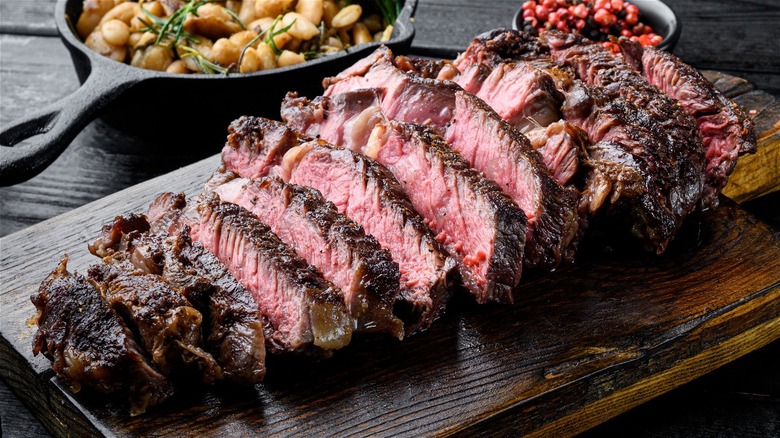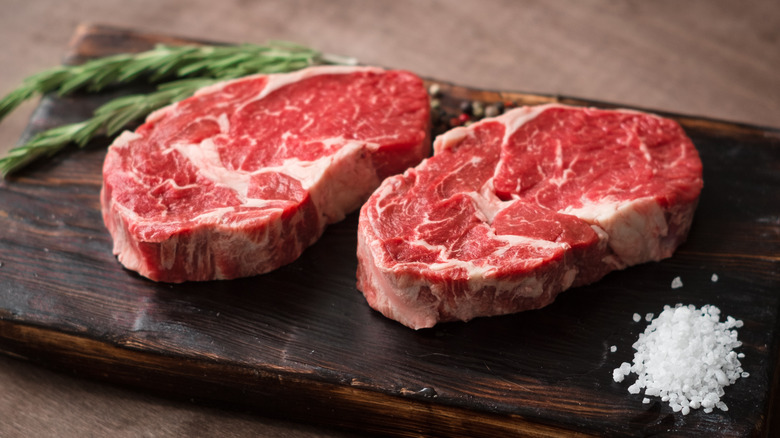Here's How A Michelin Chef Picks Out The Perfect Ribeye
Correction 1/29/23: This article has been updated to reflect that Eric Tulay is no longer executive chef of Feather & Bone.
While filet mignon certainly gets its share of street cred, when it comes to selecting a great steak, top-rated professional chefs and aspiring home cooks often prefer the ribeye. What makes this steak cut deserving of this beefy honor? It boils down to the ribeye's tender nature and superior taste, according to The Ribeye Chef.
Being some of the most juicy and flavorful steaks available, it's not surprising that they have different names when served in restaurants, including Delmonico steak. Variations available at the butcher counter include bone-in cowboy steaks and ribeye roast — also known as prime rib — that is essentially several ribeyes that haven't been cut into individual steaks. When examining a ribeye steak raw, you'll see lots of marbling and some fat. Don't let that scare you; fat is essential to a good ribeye (via Fuller Consulting).
One drawback to ribeyes is they're not among the most affordable cuts of steak. Ponying up to feed a dinner party or entire family can get expensive. Because of that, there's no better reason to make sure you know how to select the perfect ribeye.
Picking a ribeye steak like a Michelin chef
When it comes to selecting a top-notch ribeye steak, taking the advice of Michelin chef Eric Tulay makes solid sense. As the former executive chef for Feather & Bone in Hong Kong — which sells fresh beef expertly prepared for restaurant patrons — he certainly knows his way around a meat counter. When it comes to steak, Tulay's first order of business is to buy freshly cut meat, according to Michelin Guide. This means ordering from the butcher counter whenever possible. One of the side benefits of skipping the prepackaged steaks is having the butcher cut them to your preferred thickness.
Contrary to popular wisdom, Tulay also advises to go for grain-fed beef rather than grass-fed. Grass-fed beef is leaner, which is sometimes perceived as healthier. That leanness, however, makes beef rather "blah" tasting, drier, and more chewy. Grain-fed beef, on the other hand, is more flavorful and juicer, according to Feast and Farm. Tulay also emphasizes the fat in a ribeye for creating a mouthwatering bouquet and boosting the taste of the meat. That fat is actually what makes grain-fed beef so tasty. In addition to looking for nice marbling and the all-important fat (via Fuller Consulting), when you touch a good ribeye with your fingertips, Tulay says it should feel smooth and have some bounce. With this insight, now you can pick out a perfect ribeye, too.

